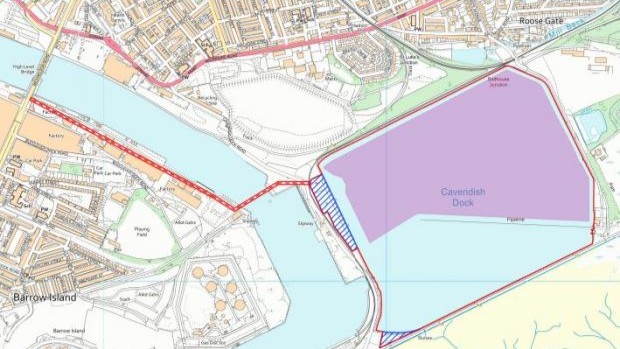
Green Cat Renewables has submitted a letter to Westmorland and Furness Council with proposals for a floating solar farm off the coast of Scotland.
The consultancy firm has asked the council for a screening opinion on the 35-40MW project, which would cover around 60 hectares of water at Cavendish Dock at the Port of Barrow.
Early development plans suggest that the panels “will be mounted on floating pontoons fixed at an optimum angle for the solar panels” and will be anchored to the base of the dock. The developers suggest that construction will require activity over a nine to twelve-month period “as a worst-case”, with minimal ongoing visits from maintenance personnel required once completed.
Green Cat Renewables notes that the development will have “minimal impact post-construction”, and reassures that the local angling club who currently use the space, as well as the local community who enjoy the footpaths around the dock, will be able to continue using the area as normal.
Moreover, significant environmental benefit could be gained from the site as the developers are currently considering planting wildflowers and native plants around the site as part of the development. The developers add that enhancements for coastal waterbirds will be included as part of the design, including “seabird nesting rafts” and “additional roosting structures”.
Floating solar still underdeveloped in the UK
Floating renewable energy projects have largely been focused on wind and hydrogen in recent years, with floating solar remaining significantly less popular.
However, this could soon change, as the recent budget increase in the latest Contracts for Difference (CfD) round saw £270 million allocated for emerging technologies, including floating offshore renewables.
Late last year, Nova Innovation deployed Scotland’s first floating solar demonstrator in the Port of Leith, Scotland. This installation is being used to directly power the headquarters of port operator Forth Ports, and has proven its durability by being able to successfully generate electricity during the intense weather conditions of Storm Babet, which hit the UK in October 2023.

